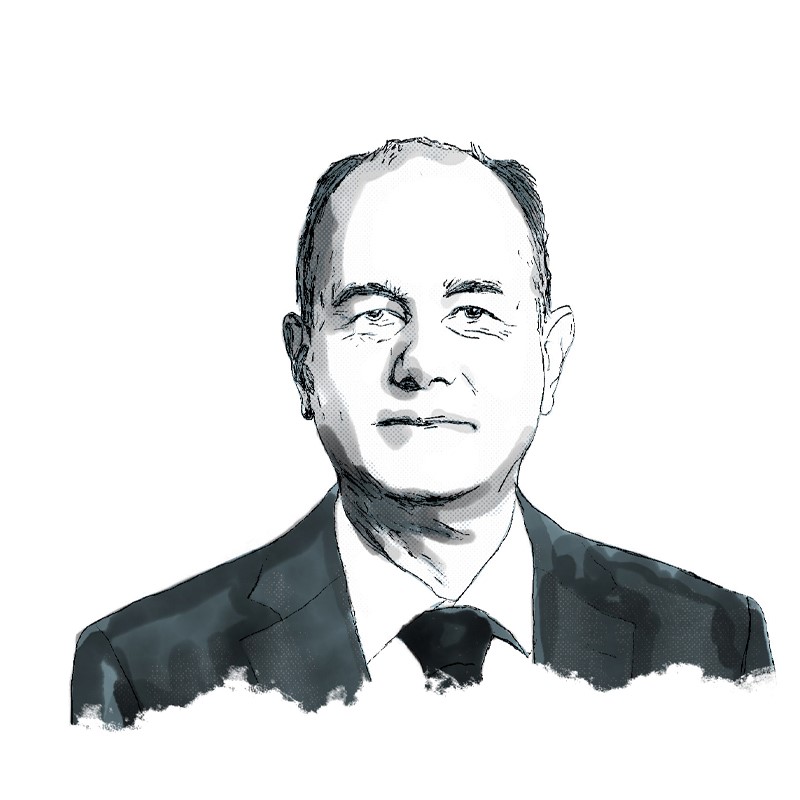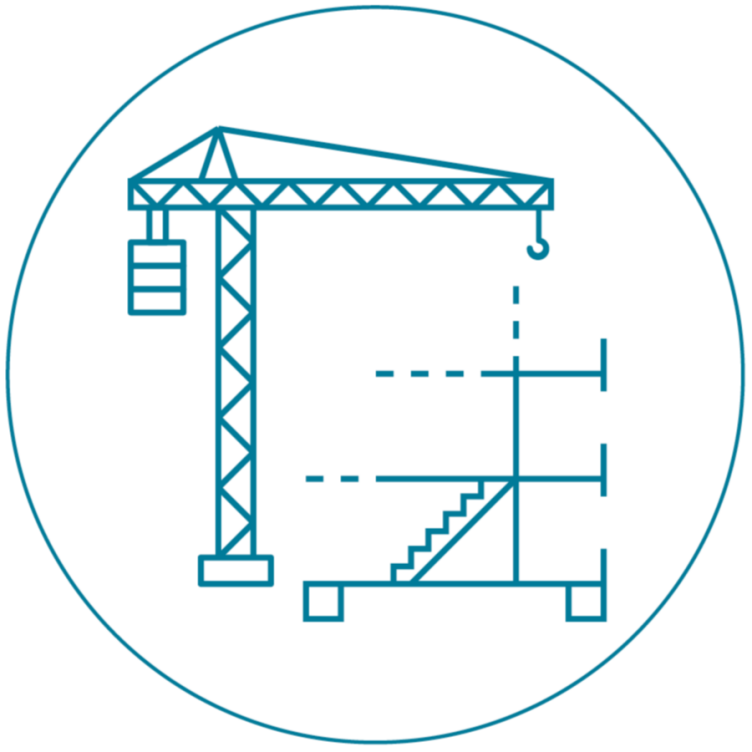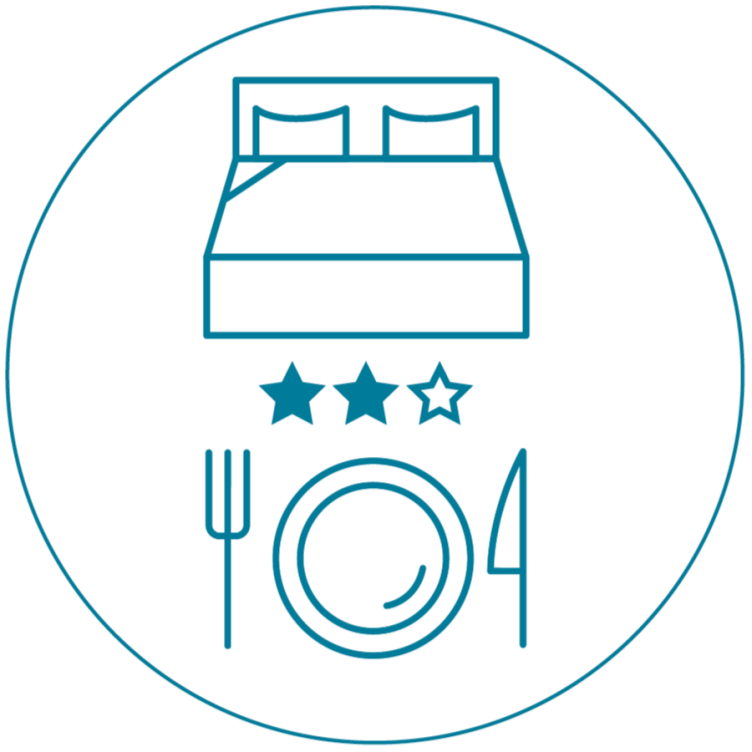“The trade conflict is currently overshadowing everything”
The KOF Business Situation Indicator for the private sector in Switzerland fell again in April, recording its third consecutive decline. Firms’ business expectations for the next six months show a similar pattern: forecasts are being adjusted downwards for the third month in a row.
Summary
The business situation cooled in April, particularly in the other services sector and among providers of financial and insurance services.
Many companies are scaling back their business expectations for the coming months.
The tariffs dispute in particular is causing uncertainty and leading to investment restraint. Companies have also become more restrictive in their personnel planning overall. On balance, no further staff increases are planned for the next three months.
The Swiss economy is increasingly facing headwinds. “These challenges are coming from the international environment. The trade conflict has become more and more of a burden over the course of the year,” explains Klaus Abberger, head of the Business Tendency Surveys section. “The uncertainty is so great that most firms are preferring to wait and see before investing in new machinery or hiring new staff,” he adds.
The hoped-for stimulus from the anticipated government investment programmes in Germany and other European countries has also faded. “In March there was still more optimism in this regard, but the trade conflict is currently overshadowing everything.” The export tariffs of 31 per cent now being threatened are hanging like the sword of Damocles over the Swiss economy. “Firms here probably didn’t expect to be treated worse than the European Union.”
At least the domestic economy is still doing relatively well – especially in retail and hospitality – according to Abberger. However, domestic growth is slowing somewhat. “The first signs of a slowdown, for example, are becoming noticeable in the service sector,” says Abberger.

“The uncertainty is so great that most firms are preferring to wait and see before investing in new machinery or hiring new staff.”Klaus Abberger, head of the Business Tendency Surveys section at KOF
Business activity cooled in April, particularly in financial and insurance services and in other services. Business in the construction industry, the project engineering sector and the retail trade is also slightly less buoyant than before. In contrast, the Business Situation Indicator revealed a fairly encouraging trend in manufacturing, wholesale and food services. This means that the picture is not uniform across all sectors, with recent growth in the key sector of other services in particular slowing down.
A different pattern can be seen in firms’ business expectations for the next six months. Companies in the manufacturing sector are adjusting their expectations downwards for the fifth month in a row, with sceptical sentiment prevailing on balance in April for the first time since the end of 2022. Firms in financial and insurance services, construction, project engineering, wholesale and hospitality are also lowering their forecasts. Only the retail trade and other service providers are more confident about future trends than they were in the previous month. If we compare the forecasts for these two sectors with those made at the beginning of this year, however, they too have become more cautious.
Despite firms’ generally sceptical assessment of the situation, Abberger still holds out some hope for the year from an economic perspective. “This year could still turn out positively if a sustainable solution is found to the trade conflict and fiscal-stimulus measures begin to take effect,” he comments, adding that there are cyclical fundamentals that could have a positive impact from the second half of the year onwards.
Companies anticipating lower wage increases than before
Firms are expecting average salary rises of 1.3 per cent over the period up to twelve months from now. They are therefore forecasting lower salary increases than in the January survey (1.5 per cent) and in last year’s April survey (1.6 per cent). Companies in the manufacturing and hospitality sectors in particular are expecting lower rises than in January. Overall, firms have become more restrictive in their workforce planning and, on balance, no more staff increases are scheduled for the next three months. Reports of staff shortages have grown in the construction and hospitality industries, are similarly frequent in manufacturing as in the last quarter and are decreasing in the other sectors (financial and insurance services, project engineering, wholesale and other services).
Manufacturing

Although the current business situation in manufacturing industry is fairly stable, expectations have deteriorated considerably and uncertainty is high. Business in the manufacturing sector changed little in April and is slightly more encouraging than it was in March. However, expectations for the next six months are cooling rapidly. The business outlook is negative on balance for the first time since the end of 2022. Nonetheless, companies are finding it very difficult to assess further developments. Uncertainty is rising again. Firms are already feeling reluctant to place new orders and are reporting a decline in demand. Although capacity utilisation rose slightly in the first three months of this year, it is below average over the medium term. Capacity utilisation also grew marginally in the chemicals and pharmaceuticals sectors. In retrospect, however, this increase is clearly not enough, as chemical and pharmaceutical companies consider their inventories of finished goods to be too low following the recent trade policy turmoil. Although shortages of intermediate products and materials are not currently significant in manufacturing industry overall, complaints about financial restrictions have increased. Firms are reporting that their competitive position is under growing pressure both domestically, in their EU export market and in markets beyond. Survey respondents themselves expect purchase prices to rise but are unable to raise their selling prices accordingly. Companies are more sceptical than before about the levels of demand in the near future. The export outlook is darkening significantly across the board in the manufacturing sector: scepticism about future volumes of exports is increasing among manufacturers of intermediate products, capital-goods producers and consumer-goods manufacturers. Consequently, there are no longer any plans to expand output in the manufacturing sector as a whole. Firms that responded after the suspension of so-called ‘reciprocal’ tariffs did not scale back their production plans compared with those that responded beforehand.
Project engineering and construction

The business situation in the building-related sectors of the economy deteriorated slightly and demand expectations in the construction industry are more subdued than before. The Business Situation Indicator in the two areas associated with building activity – project engineering and construction – fell slightly in April. Although capacity utilisation in the construction industry increased in all three segments – building construction, civil engineering and finishing – it remains below average overall. Capacity utilisation in the finishing trade in particular remains low. Although firms are now more satisfied with their order books and their earnings are stabilising, they are planning to reduce the prices of their services more frequently in the near future. Expectations for future construction activity vary. The outlook is brightening significantly in building construction and marginally in civil engineering, while it is becoming slightly gloomier in the finishing trade. As far as the levels of demand over the next three months are concerned, these trends are consistent across all three sectors, with expectations in April being more subdued than previously. The size of order books in the project engineering sector is decreasing. The construction volumes involved in new contracts are also on the decline. Project engineering firms are looking to recruit additional staff less frequently than before.
Retail and wholesale

The business situation in retail is stable, while in wholesale it is slightly more encouraging than before; the demand outlook is mixed. Business in the retail trade remained stable in April. Various trends are offsetting each other depending on the size of the firm. Business activity is cooling at small firms, while it is improving at medium-sized and large companies. Overall customer frequency and goods sales are no longer performing quite as poorly as before. However, this has failed to stabilise earnings, which continue to underperform. Nonetheless, survey respondents expect the pressure to reduce prices to ease marginally soon. Firms are also more confident about future levels of revenue than before. The business situation in wholesale improved slightly in April. However, there are countervailing trends in the two segments: business activity is cooling in the wholesaling of consumer goods, while it is easing again slightly in the wholesaling of producer goods. Both segments are now more cautious about future levels of demand. Firms in both segments are expecting higher purchase prices, meaning that they are also anticipating further rises in their sales prices.
Hospitality industry

Generally stable situation in the hospitality industry, but sales in food services are struggling. The business situation in the hospitality industry remained virtually unchanged in April compared with the beginning of the last quarter. Firms are cautiously optimistic in their business expectations for the coming six months. Revenue is roughly on a par with last year. In the accommodation sector the room occupancy rate is very high and earnings are performing well. Accommodation providers are expecting to see an increase in the number of overnight stays, while reservations for the current quarter are already rising. “If the exchange rate continues to appreciate, however, this would dampen tourism,” says Abberger. In the food-service sector, on the other hand, sales of both food and drinks are struggling and earnings remain under pressure. Food-service providers do not expect demand to pick up in the short term.
Financial sectors

Providers of financial and insurance services are reporting a less encouraging business situation than before and are becoming more cautious about future earnings performance. Business at financial and insurance service providers cooled further in April and uncertainty about business going forward increased significantly. Although earnings have recently stabilised, these institutions are more sceptical than before about future earnings. Banks are expecting demand for their services from both private and corporate customers to pick up. They are seeing growing improvements in the creditworthiness of both customer groups. However, they expect their lending to corporate customers to be less buoyant than before. Following the recent rise in income from fees and commissions and from trading operations, they are now expecting a slowdown here. Lending and deposit-taking are also likely to continue to have a negative impact on the income statement. “The financial sector is feeling the headwinds from low interest rates,” explains Abberger. On balance, insurance companies no longer expect earnings to grow much over the next three months. These firms believe that gross premiums are likely to rise more sharply in the current quarter than before and that gross payments are likely to increase less. However, there is growing scepticism about their levels of net investment income over time.
Other service providers

Companies offering other services are reporting a less encouraging business situation and are increasingly complaining of a lack of demand. Business at other service providers deteriorated slightly in April. Demand for firms’ services is less robust than before and capacity utilisation is falling minimally. Although the decline in capacity utilisation is hardly noticeable overall, it is pervasive across all sub-sectors: transport, information, communication, business-related services and personal services. Compared with the situation just before the outbreak of the coronavirus pandemic, however, capacity utilisation remains high. Nonetheless, complaints about a lack of demand are growing and companies are becoming much more reluctant to employ additional staff. Recruitment service providers, for example, no longer expect demand for their services to increase.
The Business Situation Indicator in the KOF Business Cycle Clock is plotted against the KOF Economic Barometer (see chart G 1). The indicator reflects the current business situation, while the barometer is a leading indicator of changes in activity. The clock can be divided into quadrants. During the recovery phase the business situation is below average but growth prospects are above average. At the peak of the economic cycle the situation and prospects are both above average. During the slowdown phase the situation is above average and prospects are below average. At the bottom of the economic cycle the situation and outlook are both below average. Ideally the chart runs through the quadrants in a clockwise direction.
Survey
The results of the KOF Business Tendency Surveys from April 2025 include responses from around 4,500 firms from manufacturing, construction and the major service sectors. This equates to a response rate of around 59 per cent.
Become part of the survey group and enjoy special benefits. All information is available at https://kof.ethz.ch/en/surveys/business-tendency-surveys.html
Contacts
KOF Bereich Zentrale Dienste
Leonhardstrasse 21
8092
Zürich
Switzerland
KOF Konjunkturforschungsstelle
Leonhardstrasse 21
8092
Zürich
Switzerland
